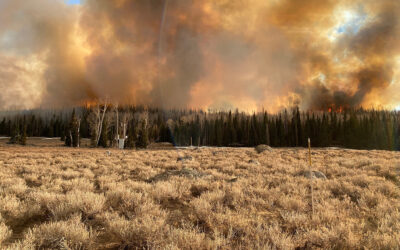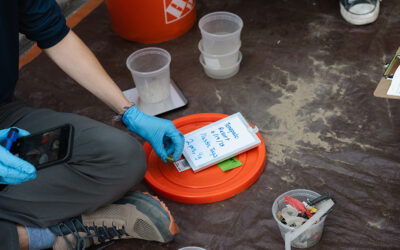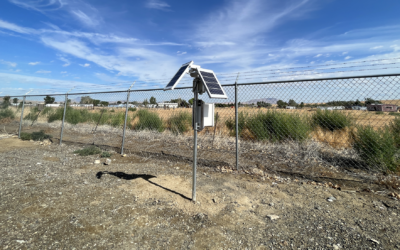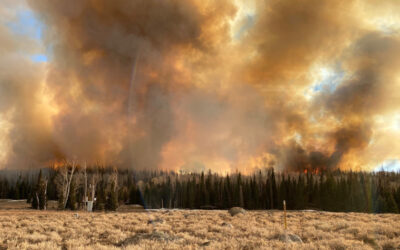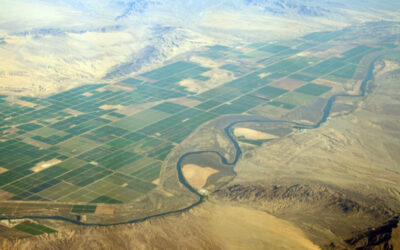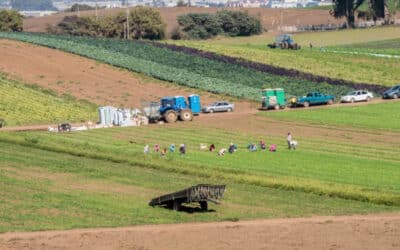DRI scientist Kristin VanderMolen, Ph.D., has been awarded the 2025 Rising Researcher Award in recognition of her outstanding early-career accomplishments and potential for advancing scientific knowledge in the field of applied anthropology.
What We Know About Wildfire Risk and Prevention
DRI scientists conduct a wide range of research on wildfire related topics to help policymakers, fire managers, and community members navigate challenges to public safety and health. In this Q&A, a selection of our scientists answer some of the most pressing questions about the environmental conditions that lead to the most devastating blazes and offer previews into some of their most relevant research.
DRI Internships Offer Nevada Students Experience with Research and Insight into STEM Careers
This summer and fall, DRI brought twelve students from Nevada’s community and state colleges to the Las Vegas and Reno campuses for a paid, immersive research experience. Over the course of the 16-week program, students worked under the mentorship of DRI faculty members to learn about the process of using scientific research to solve real-world problems. This unique internship program welcomes all students, not only those pursuing majors in science, who are in their first or second year of enrollment at local state and community colleges.
DRI Researchers Partner with NDEP to Prepare Rural Nevada Communities for a Smokier Future
In 2021, DRI researchers partnered with the Nevada Division of Environmental Protection (NDEP) to address the gap in air quality monitoring. Led by Kristin VanderMolen, Ph.D., assistant research professor of atmospheric science, a new study details how the research team designed custom air quality sensors and information materials for rural Nevada counties.
DRI’s CNAP Project Selected as Regional Model for Building National Climate Adaptation
DRI is leading the way in building regional climate resiliency through the California-Nevada Adaptation Program, which will prepare communities for local-level action to address climate hazards including extreme heat and wildfire smoke, water scarcity, and coastal flooding.
Nevada receives $550,000 to enhance wildfire smoke air quality monitoring technologies, public messaging in rural communities
The Nevada Division of Environmental Protection (NDEP) and Desert Research Institute (DRI) are excited to announce a new partnership program that will expand wildfire smoke air quality monitoring infrastructure and public information resources for rural communities across the state.
Rosen Applauds Over $500,000 Awarded to Desert Research Institute to Mitigate Risk of Wildfire Smoke in Rural Communities
News release reposted from Senator Jacky Rosen. WASHINGTON, D.C. –U.S. Senator Jacky Rosen (D-NV) released the following statement applauding the Environmental Protection Agency (EPA) for awarding a grant totaling $544,763 to the Desert Research Institute...
DRI scientists investigate effectiveness of heat warnings along US-Mexico border
Featured research by DRI’s Kristin VanderMolen, Ben Hatchett, Erick Bandala, and Tamara Wall.
In July and August, daytime temperatures along parts of the US-Mexico border can reach as high as 120 degrees – more than 20 degrees above normal human body temperature. For agricultural workers and others who live and work in the region, exposure to these extreme high temperatures can result in serious health impacts including heat cramps, heat exhaustion, heat stroke, and heat-related death.
New donor-powered research underway to address climate adaptation, water resources, and more
The DRI Foundation has just awarded the next round of seed grants to six teams of researchers through the Innovation Research Program (IRP). The IRP provides the start-up funding DRI scientists need to test new ideas and produce initial data, which will help them...
Meet Kristin VanderMolen, Ph.D.
Kristin VanderMolen, Ph.D., is an assistant research professor and social scientist with the Division of Atmospheric Sciences at the Desert Research Institute.

